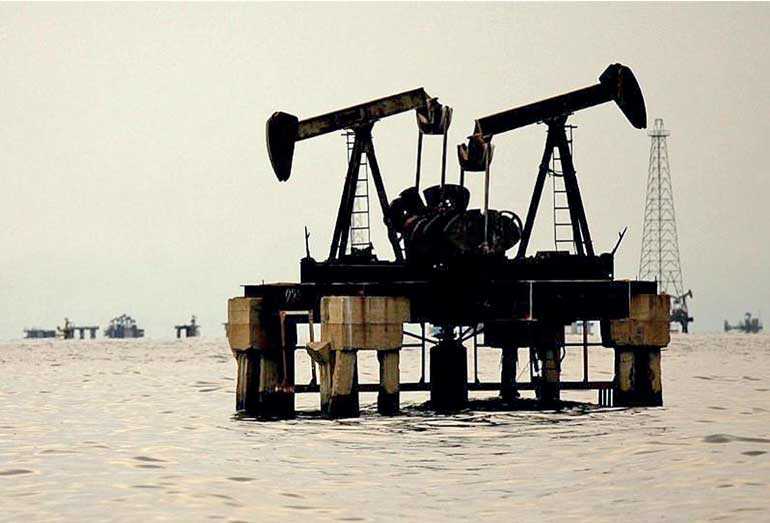Thursday Mar 06, 2025
Thursday Mar 06, 2025
Wednesday, 30 May 2018 01:07 - - {{hitsCtrl.values.hits}}

London (Reuters): Oil prices extended losses on Monday as Saudi Arabia and Russia said they may increase supplies while US production gains show no signs of slowing.
Brent crude futures stood at $75.35 a barrel at 0913 GMT, down $1.09 from the previous close and after touching a three-week low of $74.49 earlier in the session.
US West Texas Intermediate (WTI) crude futures were at $66.69, down $1.19, after hitting a six-week low of $65.80.
The Organization of the Petroleum Exporting Countries (OPEC) and other producers led by Russia began withholding 1.8 million barrels per day (bpd) of supplies in 2017 to tighten the market and prop up prices that in 2016 fell to their lowest in more than a decade at less than $30 a barrel.
Prices have soared since the start of the cuts last year, with Brent breaking through $80 this month, triggering concerns that high prices could crimp economic growth and stoke inflation.
“The pace of the recent rise in oil prices has sparked a debate among investors on whether this poses downside risks to global growth,” Chetan Ahya, Chief Economist at US bank Morgan Stanley, wrote in a weekend note.
To address potential supply shortfalls Saudi Arabia, de-facto leader of producer cartel OPEC, and top producer Russia have been in talks about easing the cuts and raising oil production by one million bpd.
“Given that our crude balance is short some 825,000 bpd over [the second half of the year], a gradual increase of about one million bpd would probably limit stock draws to quite some extent,” Vienna-based consultancy JBC Energy said.
Meanwhile, surging US crude production showed no sign of abating as drillers continue to expand their search for new oilfields to exploit.
US energy companies added 15 rigs looking for new oil in the week ending 25 May, bringing the rig count to 859, its highest since 2015, in a strong indication that American crude production will continue to rise.
US crude output has already surged by more than 27% in the past two years, to 10.73 million bpd, ever closer to Russia’s 11 million bpd.
Discover Kapruka, the leading online shopping platform in Sri Lanka, where you can conveniently send Gifts and Flowers to your loved ones for any event including Valentine ’s Day. Explore a wide range of popular Shopping Categories on Kapruka, including Toys, Groceries, Electronics, Birthday Cakes, Fruits, Chocolates, Flower Bouquets, Clothing, Watches, Lingerie, Gift Sets and Jewellery. Also if you’re interested in selling with Kapruka, Partner Central by Kapruka is the best solution to start with. Moreover, through Kapruka Global Shop, you can also enjoy the convenience of purchasing products from renowned platforms like Amazon and eBay and have them delivered to Sri Lanka.
Discover Kapruka, the leading online shopping platform in Sri Lanka, where you can conveniently send Gifts and Flowers to your loved ones for any event including Valentine ’s Day. Explore a wide range of popular Shopping Categories on Kapruka, including Toys, Groceries, Electronics, Birthday Cakes, Fruits, Chocolates, Flower Bouquets, Clothing, Watches, Lingerie, Gift Sets and Jewellery. Also if you’re interested in selling with Kapruka, Partner Central by Kapruka is the best solution to start with. Moreover, through Kapruka Global Shop, you can also enjoy the convenience of purchasing products from renowned platforms like Amazon and eBay and have them delivered to Sri Lanka.